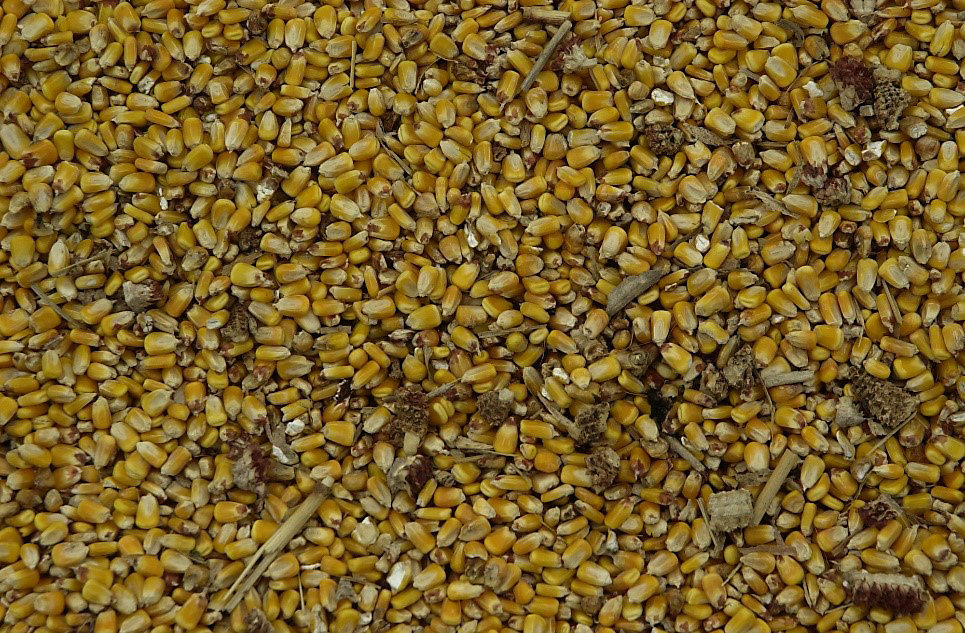Not only does the rain impact yield, it has an impact on the level of mold and mycotoxins in the corn used for feed. Livestock and poultry producers need to prepare for corn with potentially higher levels of these performance-robbing contaminants. John Goeser, Research and Innovation Director at Rock River Labs wrote, “I'm expecting this year’s crop to be relatively 'dirty'.” So, what can producer do to manage the expected quality issues found in this crop?
It is well established that extended periods of wet weather, especially before corn harvest, accelerates the growth of mold in corn. Along with the growth of mold, producers need to address concerns about the presence of mycotoxins.
Mold, or fungi, are found everywhere. In the field, mold is found on soil partials, in the organic matter and on the plant material. Only a few of these mold species impact animal performance, but when mold growth occurs on corn grain, the mold deteriorates the feeding quality of the grain and can produce mycotoxins. Producers can do very little to prevent mold growth in the field – but there are strategies which help reduce mold growth in stored grain before feeding to livestock and poultry.
In 2010, Dr. John Patience, Professor at Iowa State University, published a fact sheet outlining many valuable mold management techniques.
- Control insects that can damage corn kernels. Insect damage to kernels allows fungi to establish themselves.
- Adjust the combine to reduce kernel damage. Broken corn offers easy access to fungi, allowing them to grow more easily than in intact kernels.
- Manage corn moisture levels. For example, uninfected corn at 18% moisture can only be safely stored for just over a month at 70°F, while corn at 13% moisture can be stored for 26 months at the same temperature.
- If corn drying capacity is overwhelmed due to the wet harvest, options are available. The first is to dry the corn to 17-18% moisture and then aerate to bring the moisture down to 14% needed for summer storage. The second option is to dry it in two passes: first to 17-18%, and later to 14%. The third and least desirable option is to dry corn to 17-18% and either sell or use the corn before the warm weather arrives. However, if corn is infected with mold, drying must occur sooner and the ultimate target is 13%.
- Realize that low-test-weight corn will not store as well as regular corn; storage times are reduced up to 50%. Use or sell this corn first before it deteriorates further.
- Don't store wet corn overnight in a wagon or truck, if possible.
- Use aeration if drying is not possible; recommended rates for wet corn are 0.2 cfm/bu. Properly managed, aerated grain should stay at 28 to 35°F throughout the winter.
- Rapid on-site test kits can provide early detection. When toxins are found, harvest affected fields first and follow the drying and storage recommendations outlined above. Don't delay harvest and grain drying to limit mycotoxin production.
- Harvest infected fields and store the corn from fields showing significant amounts of ear rot separately.
- Remove fines from corn, as broken kernels are 3-4 times more susceptible to mold growth than intact kernels.
- Be sure storage structures are thoroughly cleaned before filling with grain. Repair bin damage to stop moisture.
- Clean corn can be stored at 16-17% moisture in winter, but moldy corn should be dried to 15% to prevent further growth. Dry down to no more than 13% moisture in the spring.
- Providing good aeration in stored corn helps prevent moisture buildup in bins. Be vigilant about monitoring bin temperatures to prevent mold growth.
- Mold inhibitors have been used successfully to impair mold growth. Use a well-researched, organic acid blend like Myco CURB® or Grain SHIELD® to protect corn from additional mold damage.
2018 will present challenges for corn growers, grain merchandizers and livestock and poultry producers. However, because we know the quality of this year’s corn crop is likely marginal at best, we have notice of the need to manage this crop differently. Armed with this knowledge and advice from Kemin, university extension and nutritionists, we can still preserve the quality of this crop – until we have to do it all over again in 2019.
References
1https://www.noaa.gov/news/september-was-3rd-wettest-4th-warmest-on-record-for-us. Accessed October 25, 2018.
2https://www.farmfutures.com/crop-report/usda-crop-progress-corn-harvest-inches-forward. Accessed on October 25, 2018.
3https://www.rockriverlab.com/pages/2018-Corn-Harvest-Challenges.php. Accessed on October 25, 2018.
4Patience, John F.; Ensley, Steven M.; and Hoyer, Sherry, "Mycotoxin Contamination of Corn: What it is, what it does to pigs and what can be done about it" (2010). Iowa Pork Industry Center Fact Sheets. 18.


